from 2 reviews
Up to 8 days
Unlimited
English
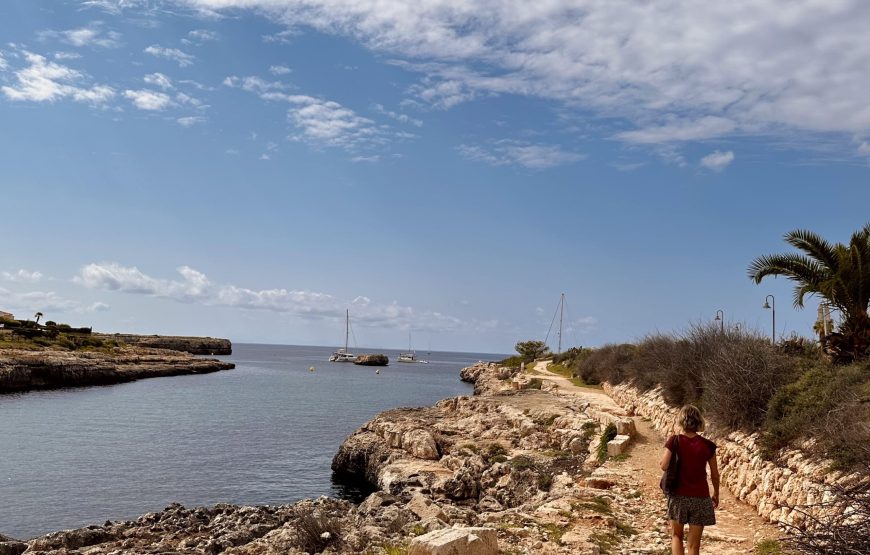
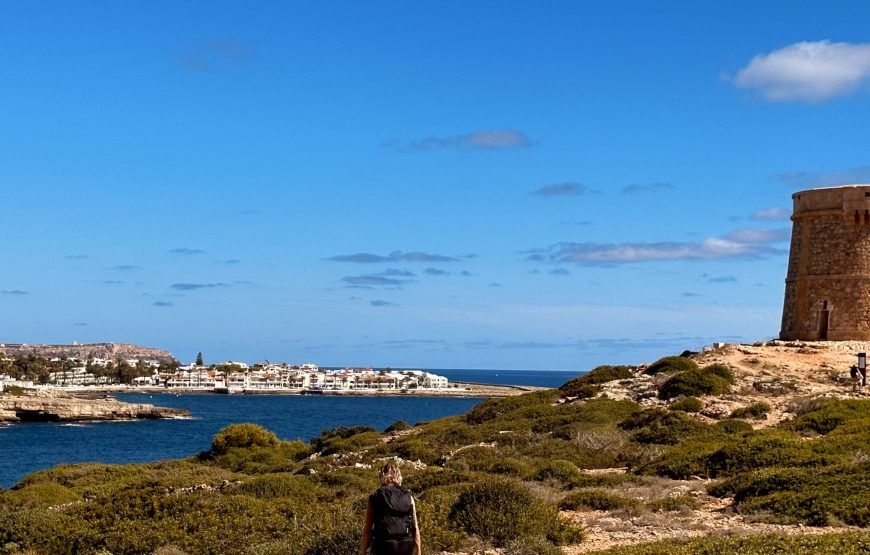
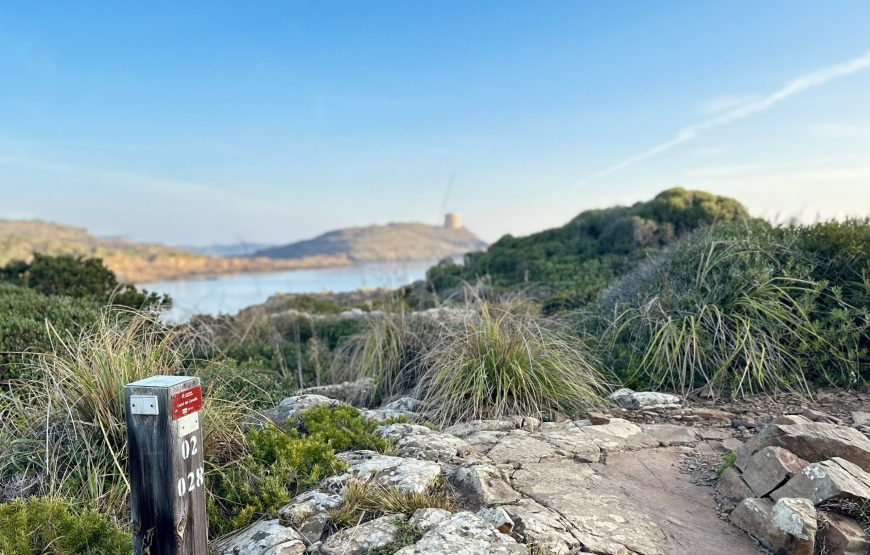
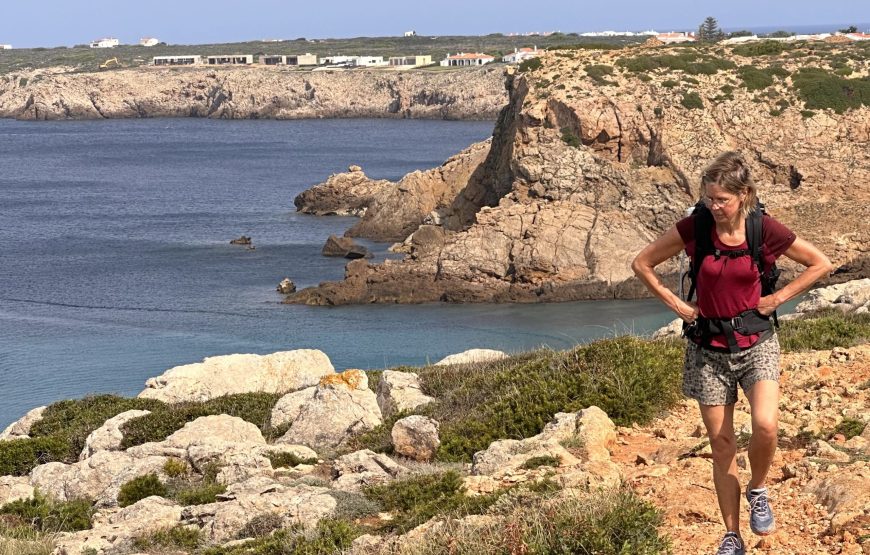
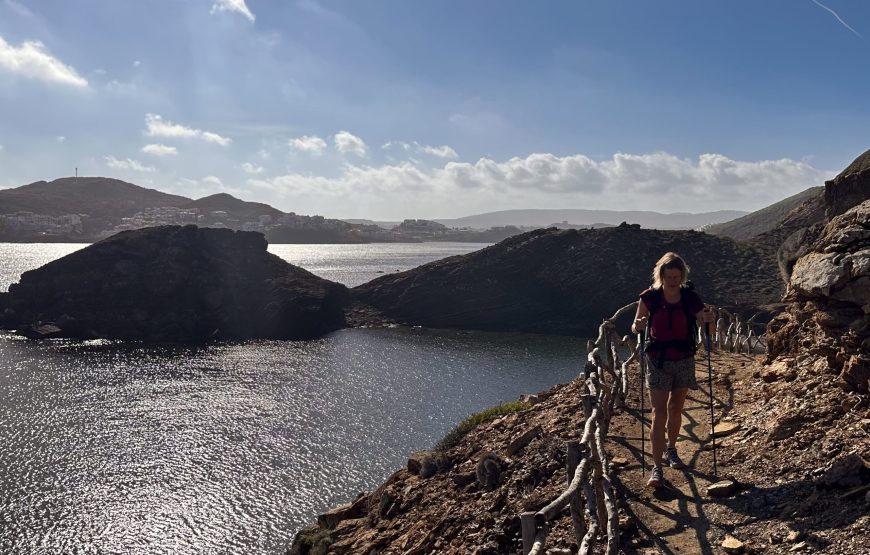
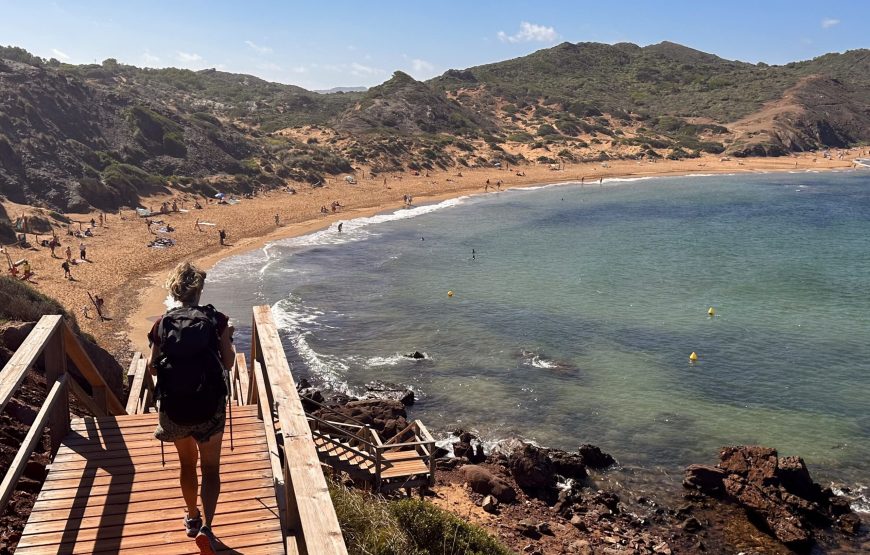
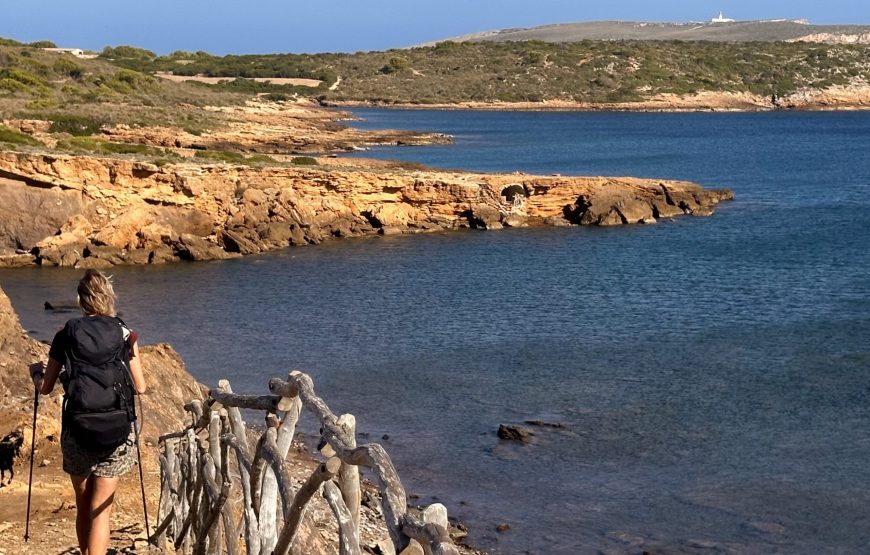
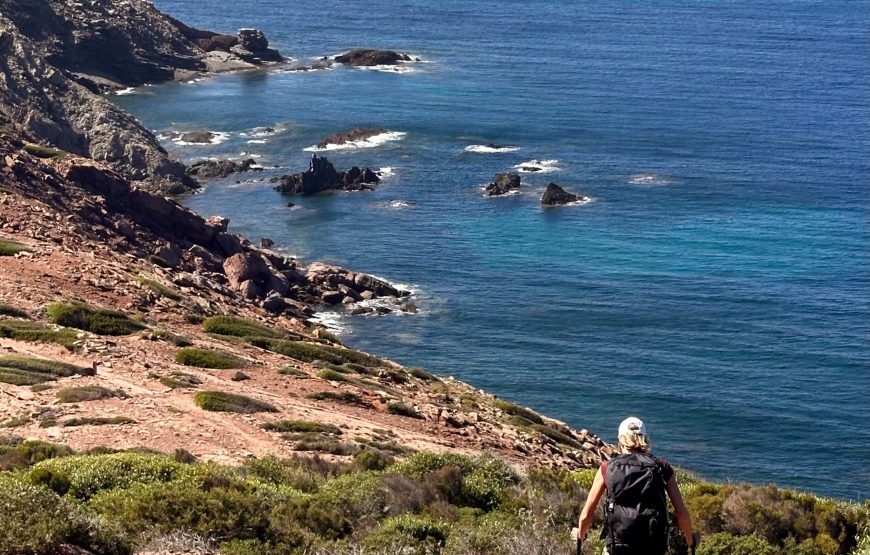
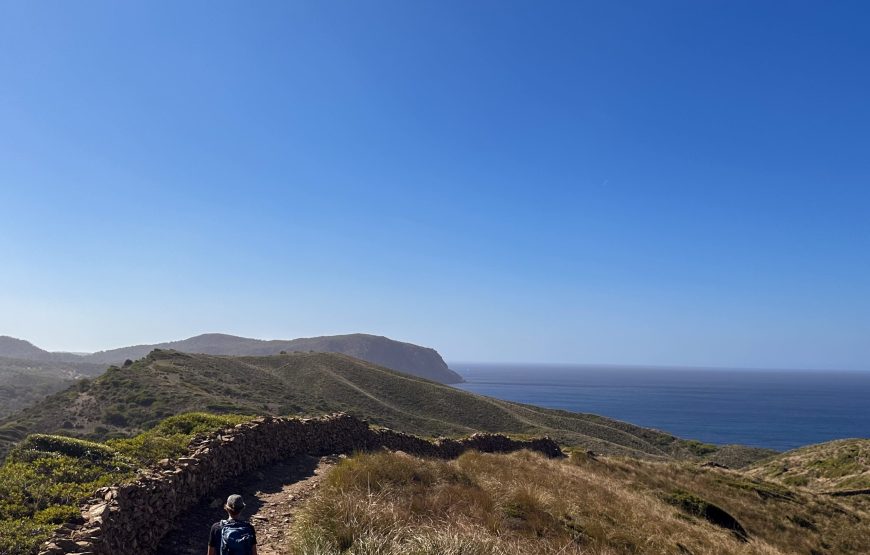
Overview
The north coast of Menorca is more unknown and steep.
You can enjoy walking holidays Menorca north. Camí de Cavalls is the coastal route that surrounds the island of Menorca. We have prepared for you a week-long trip. You stay in hotels, apartments and farms stays. Each night in a different one. With breakfast included whenever possible. We will pick you up from the airport on the day of arrival. Don’t worry about luggage. We will take it to each accommodation.
In the Walking Holidays Menorca North you can be among landscapes of special beauty. Plant species are endemic. Adapted to winds such as the tramuntana. The island of Menorca has been a biosphere reserve since 1993. During the route you will cross the S’Albufera des Grau natural park, the lighthouses of Favaritx, Cavalleria and Punta Nati and impressive beaches.
Camí de Cavalls is perfectly signposted every 50 meters. You will not get lost.
Take a small backpack with you with some food, water for a whole day, hat, sunscreen and walking sticks. When you reach the end of the stage you will always find a place with restaurants or sometimes you can do it in the accommodation where you are staying.
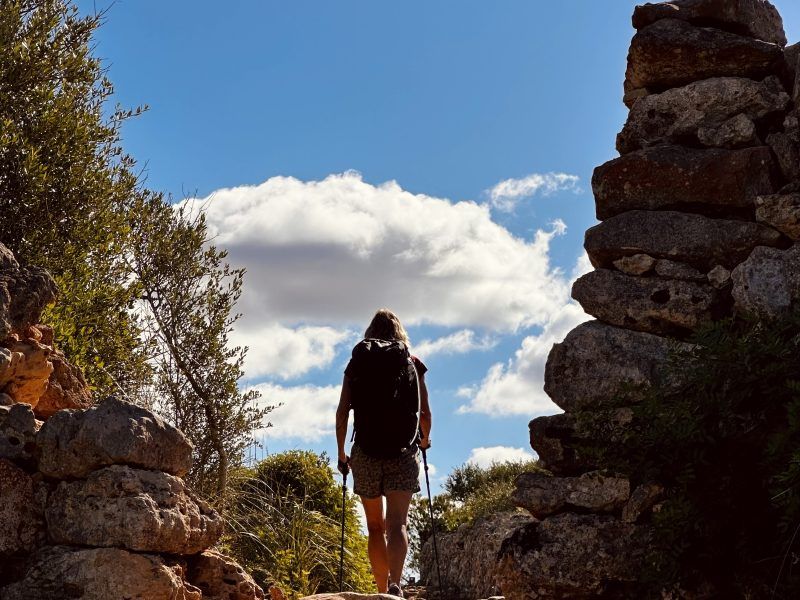
We pick you up at the Mahón airport, in Menorca, Maó. Capital of the island of Menorca. City founded by the Carthaginians, it has passed through several hands until it became part of Spain. It has a natural port of 6 km length. Mahón was captured by the British in 1708 and you can still see an appreciable influence on the architecture of the city.
Strolling through its streets, approaching the church of Santa María, the mercat del peix and descending to the port to enjoy a good dinner, are things to do on your first night in Menorca Camí de Cavalls Norte.
We start our route of walking holidays Menorca north in the Cami de Cavalls in the final part of the port of Maó
and continue by road towards Sa Mesquida. There we can see the British defense tower from the 18th century. The tramuntana, north wind, leaves its mark on the vegetation of the coast. We will be able to observe the socarrells, endemic shrubs of the island with hemispherical shapes and strong and thorny ramifications. Advancing along the path, macar (pebble) from Binillautí appears.
The island of Menorca was declared in 1993 a Biosphere Reserve by UNESCO. This first stage runs through the heart of the reserve: the S’Albufera des Grau Natural Park.
The biodiversity of the area will allow us to enjoy different landscapes. If you are interested in geology, don’t miss this VIDEO.
We will find the white sand coves of Sa Torreta and Morella. The Favàritx lighthouse guides us to the bottom as the end of the stage. Unforgettable route.
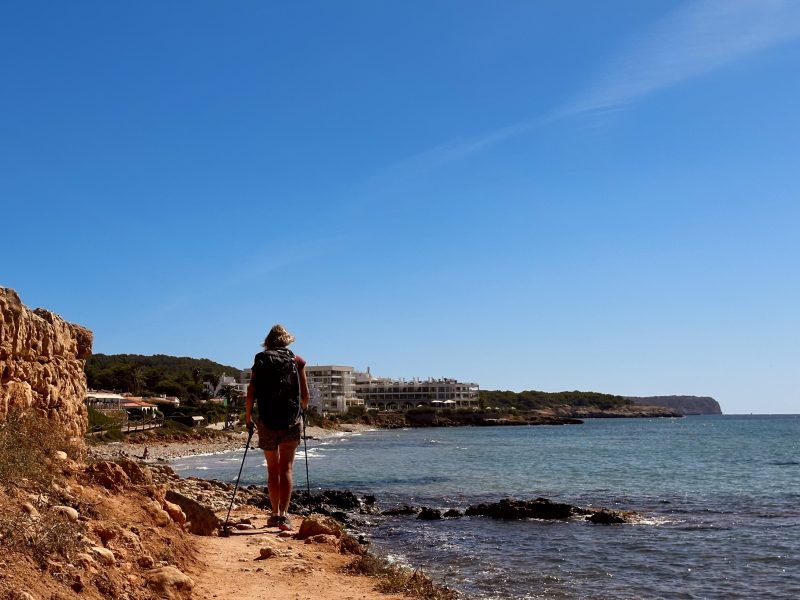
We begin stage 2 of Menorca Cami de Cavalls North at the Favaritx lighthouse. The route continues through the agrarian landscapes of Menorca. The route approaches the coast again to the beach of Pou d’en Caldés, a place of great wealth of endemic plants. We continue inland until we reach the Port d’Addaia and the Mongofra salt flats. High ecological level area and good point of observation of birds.
The stage ends with a 3.5 km asphalted section that connects the Addaia urbanization with that of Arenal d’en Castell.
We begin the stage on the beach of Arenal d’en Castell. We skirt the coast until we cross the Son Parc urbanization, until we reach the Son Saura beach. Dune system and wet area. We will also pass through the s’Albufera des Comte. When we leave Ses Salines we will have to travel 5 km on a paved road until we reach Cala Tirant.
Near the route is the fishing village of Fornells. We can visit the Fornells tower erected by the British to defend the port from invaders.
This stage runs through one of the best preserved areas of the island’s coastline. In this section of remarkable geological wealth we can discover natural sites of great biodiversity. The Cavalleria lighthouse is located at the northernmost point of the island, on the impressive cliffs of Cape Cavalleria. It opened in 1857, and was the first lighthouse to be built on the north coast of Menorca.
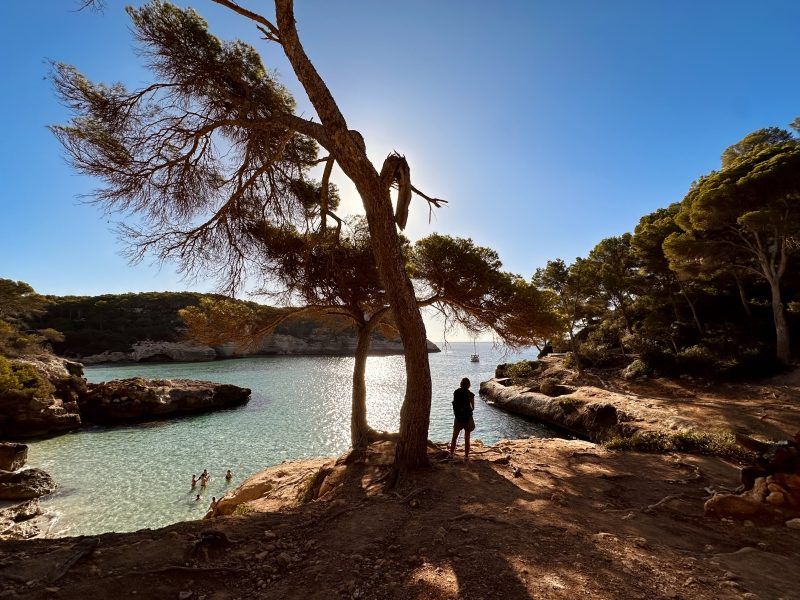
We start the day crossing the beaches of Cavalleria and Ferragut. Wild sand of large dimensions, crystal clear waters and reddish sand.
On this route we can visit the archaeological site of the Roman city of Sanisera.
Menorca Camí de Cavalls North takes us to Cala Pregonda, where volcanic rocks dress it in yellowish white. Cala Barril, Cala en Calderer, Binimel.là, Pregonda are some of the virgin beaches that we will find during the tour.
The North Menorca Marine Reserve is located in this area; a delimitation of the maritime space, created to preserve its most representative ecosystems.
From this section we can see the remains of Santa Águeda castle, which stands on the third summit of the island, at an altitude of 264 meters.
The path starts from the beach Els Alocs with boulders, to reach the sandy areas of Cala Pilar and Alfuri, an area of ??endemic plant richness. Transparent waters of intense blue in contrast to the reddish color of the rocks and the yellowish color of the sand. Typical landscape of Menorca Cami de Cavalls Norte that also leads us to large areas of forest.
In Pla de Mar the path heads inland to reach the Vall, a dune landscape through which we will reach Cala Algaiarens.
Following the coast line we will reach Cala Morell. On its cliffs we can appreciate an important necropolis from the Talayotic period (1500-300 BC), formed by caves carved out of the rock.
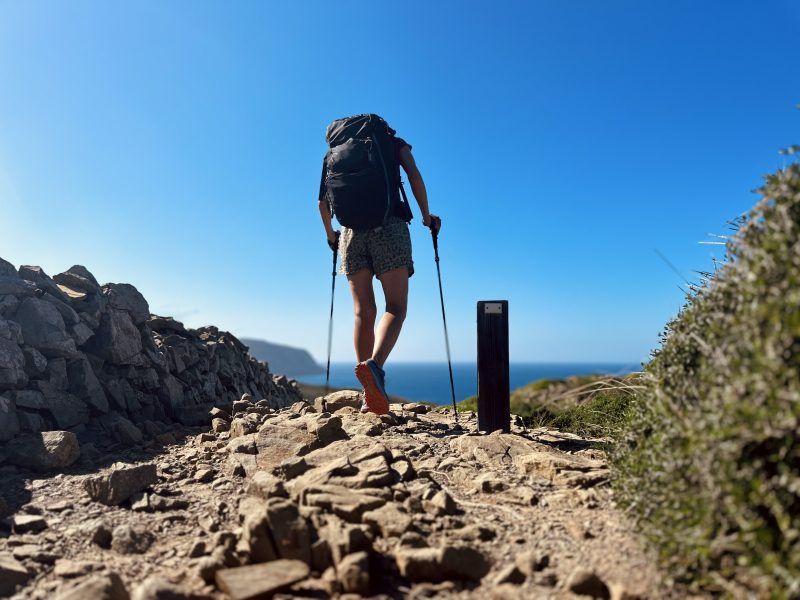
Menorca is known as the island of the wind. In this section we will be able to observe the strong incidence that the north wind has on the rocks that appear on the road and its low vegetation. In the area of Punta Nati its historic lighthouse impresses surrounded by immense fields of scattered stones. In Cap de Bajolí it is worth paying attention to the coastal vegetation that grows among rocky areas.
We will arrive at the Cala des Corbetar, from where we will be able to admire the Pont d’en Gil, a natural rock bridge modeled by maritime erosion. From this point to the port of Ciutadella , Camí de Cavalls runs for 5 km on paved roads that line the coastline.
Time to enjoy Ciutadella and get lost in its noble streets.
You can take advantage to enjoy a good Mediterranean breakfast before leaving for the Maó airport.
You can also visit the Camí de Cavalls Sur in Menorca. HERE you can get information.
And if you want you can take a look at the rest of the wellness and women’s trips that we have prepared on WAW.travel.
NO This a shared experience. You can enjoy with men or women.
Yes, that is possible. However, you must be a experienced mountain biker. Ask us about the possibilities.
We select our accommodations very carefully. You usually sleep in hotels, but depending on the time of the year you need to sleep in an apartment or rural house. And remember .... don´t be worried about your luggage we move it from hotel to hotel.
you can read our blog with the topic “The 10 most frequently asked questions about the Cami de Cavalls in Menorca”
You are the best!